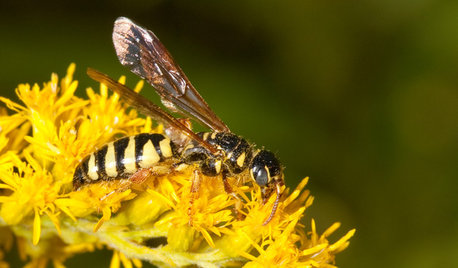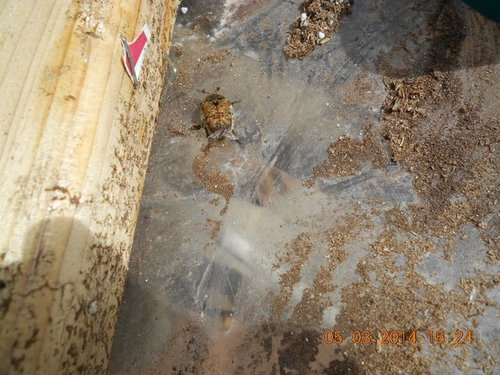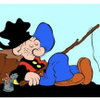Insect ID
gjcore
9 years ago
Related Stories

FALL GARDENING7 Reasons Not to Clean Up Your Fall Garden
Before you pluck and rake, consider wildlife, the health of your plants and your own right to relax
Full Story
GARDENING GUIDESAttract Thynnid Wasps With Summer-Flowering Native Plants
These beneficial insects will hunt damaging beetle grubs in your lawn
Full Story
GARDENING FOR BUTTERFLIESGardening for the Bees, and Why It’s a Good Thing
When you discover how hard bees work for our food supply, you may never garden without them in mind again
Full Story
GARDENING AND LANDSCAPINGBid Bad Garden Bugs Goodbye and Usher In the Good
Give ants their marching orders and send mosquitoes moseying, while creating a garden that draws pollinators and helpful eaters
Full Story
GARDENING GUIDES15 Native Flowers That Feed Native Bees
These perennials offer superfood to hundreds of bees and are gorgeous in their own right
Full Story
EARTH DAYHow to Design a Garden for Native Bees
Create a garden that not only looks beautiful but also nurtures native bees — and helps other wildlife in the process
Full Story
GARDENING AND LANDSCAPINGBe a Citizen Scientist to Help Wildlife, Learn and Have Fun Too
Track butterflies, study birds, capture stars ... when you aid monitoring efforts, you’re lending Mother Nature a hand
Full Story
EARTH DAYHow to Help Your Town’s Beneficial Birds and Bugs
Make a habitat using local materials to provide a home to the creatures that help our gardens
Full Story
FARM YOUR YARDHello, Honey: Beekeeping Anywhere for Fun, Food and Good Deeds
We need pollinators, and they increasingly need us too. Here, why and how to be a bee friend
Full Story
GARDENING GUIDESInvite Mining Bees to Your Garden by Planting Their Favorite Plants
Look for mining bees (Andrena) pollinating woodland wildflowers in U.S. gardens this spring
Full StoryMore Discussions










bugdoctor
Skybird - z5, Denver, Colorado
Related Professionals
Danbury Landscape Architects & Landscape Designers · Ashland Landscape Architects & Landscape Designers · Peabody Landscape Contractors · Salem Landscape Contractors · Chelmsford Landscape Contractors · Chesapeake Ranch Estates Landscape Contractors · Hawaii Landscape Contractors · Middletown Landscape Contractors · New Brighton Landscape Contractors · Oakland Landscape Contractors · Paramus Landscape Contractors · Northlake Landscape Contractors · Palos Heights Landscape Contractors · Half Moon Bay Solar Energy Systems · Lake Mary Solar Energy SystemsgjcoreOriginal Author
milehighgirl
bugdoctor
milehighgirl
bugdoctor
ZachS. z5 Platteville, Colorado
bugdoctor
ZachS. z5 Platteville, Colorado